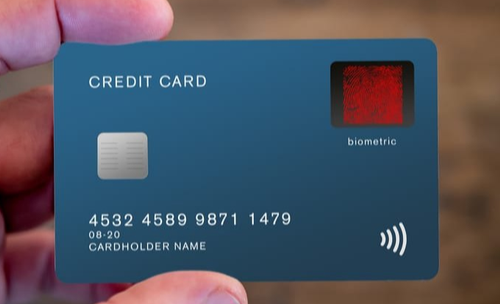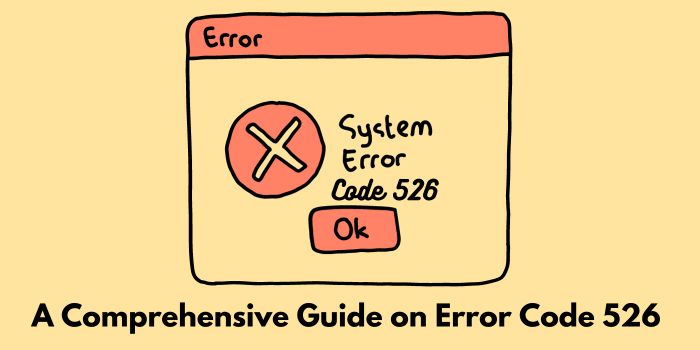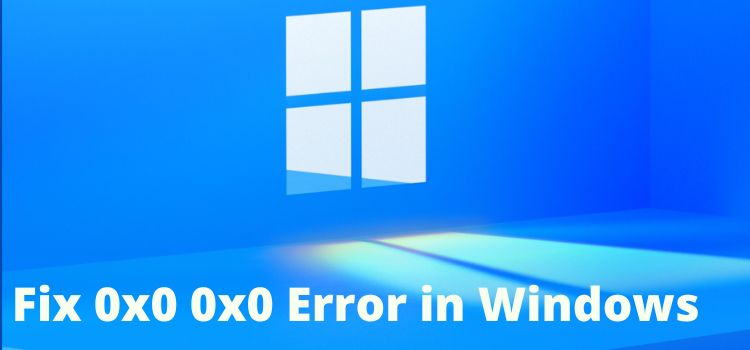Here is a simple and fruitful article that discusses the meaning of the “system_thread_exception_not_handled” Error, the time of its occurrence, the reason behind the happening followed by 5 possible methods of fixing it.
There are times when we run the power button of the computer to start it, but it does not start properly. Instead, there is a blue-colored screen that pops up along with a common error message that turns up within 10-15 seconds after the blue screen appears. The blue screen is called the ‘blue screen of death’ and the message that pops up is “system_thread_exception_not_handled”. The same thing can happen when any system is being booted.
What does the “system_thread_exception_not_handled” mean?
The message in the error box is directly associated with an indication that a certain system thread in the system has generated an exception; an exception of an error that the system handler had not caught. Just the reason why the handler failed to catch the bug and fix it, the blue screen of death appears on the screen. Within that time, the device is trying to collect the information regarding the error. As a result, the error code comes up.
There can be two kinds of messages on the code: a letter series as a file name (if one is lucky enough) or a number series. The code sometimes carries some number series like 0*0000007E or 0*1000007E. If the code contains a letter series, which is supposed to be a file name, it can show like this-cpvorejejvf. sys, cdfnvfingbnow. sys, or many others. To resolve this issue, one needs to reboot the whole system, requiring using safe mode to break the chain.
When and why this happens?
There are two times this error can occur in the system. First, if the system is restarted. Second, if the system is booted from the shutdown. Thirdly, this error can occur sporadically as well when the user is using a program that needs specific graphic drivers for work.
Also, this error happens when the system is not compatible with the driver that is installed, specifically the graphic drivers. The driver can be outdated, misplaced, or simply can be corrupted. Sometimes these graphic drivers can get manipulated by malware or can be inappropriately installed. This can most probably be one of the main reasons why the ‘system_thread_exception_not_handled’ error occurs in Windows 10. Below are Simple ways to fix the “system_thread_exception_not_handled” on Windows 10 devices:
1: To find out the Faulty Driver
The most elementary way of fixing this error is to check the system log keeping the event tracks. Follow the below-mentioned steps to open and operate the event viewer-
Press the Windows button +R from the keyboard which will help to pop up the ‘run’ dialogue box.
Type ‘eventvwr’ and hit enter.
Scroll down to the list where it mentions “Windows Logs”; click on that and a drop-down menu box is opened.
From the drop-down box, click on “system” within the menu to track all the recent events.
Lastly, check each event and one will be able to find out with which driver the “system_thread_exception_not_handled” error is associated.
Find here: Fix SSL Common Name Mismatch Error like ‘ERR_CERT_COMMON_NAME_INVALID’ in Chrome
2: Need to update, roll back, or reinstall the system drivers
Once the faulty driver is found, half of the job is done. To fix the issue, one needs to fix the driver which might take some small and simple steps. One might need to update it; one might need to roll it back to its previous version, or someone else might need to reinstall the whole driver for another time. For this, one needs to press the Windows button +X from the keyboard, followed by selecting the ‘driver manager’
To Update: One needs to go through the driver’s list; right-click on each driver and choose to update them. The drivers can be updated including audio devices, display adapters, disk drives, and network adaptors as well. While clicking on the ‘update option’, the drivers will be updated to their latest versions.
To roll back: Again, the user needs to go through the device list, right-click each of the hardware, and go to their properties. Next is to navigate to the ‘driver’ tab and click on the roll-back option. Just click on the ‘yes’ option.
To Reinstall: First, uninstall the device; next, go to the manufacturer’s website. There one can find the most recent driver for the device and install it manually.
3: Renaming the Faulty Driver
For every driver that comes associated with the mentioned error message; one can immediately rename the driver. Renaming will lead Windows to fetch a brand new copy of it and install it. For this, follow the next steps mentioned at this point-
The first one needs to open the command prompt app that can be found by searching for ‘command prompt’ or in short ‘cmd’ in the device’s search box.
Next, type in the command box, C: (press enter) cd windows\system32\drivers (press enter) ren FILENAME.sys FILENAME.sys (hit enter)
Lastly, type ‘exit’; then restart the device.
You May like to know: Guide For Fixing https://olpair.com & Pair Error in OpenLoad Streaming
4: Repairing the system files
Sometimes, it is the system files that might impact the device drivers in the computer. This problem can be fixed as well by running Windows repair programs like DISM or SFC.
To run SFC: Open Command prompt> (if in safe mode, the option will be under ‘advanced options’ in the list)> type ‘sfc/scannow’>hit enter. (this will replace any damaged file or driver that might cause any of the associated errors.) If the problem sustains, the next step is to perform DISM to restore the health of the user’s device.
To run DISM: Open Command prompt> type the following commands chronologically>Exe/Online/Cleanup-image/Scanhealth>Exe/Online/Cleanup-image/Restorehealth.
5: Restoring the PC to an earlier version
It is important to back up the user’s systems so that in the need of the hour, one can restore the device to its earlier version; to the time when the system was not facing any of the ‘system_thread_exception_not_handled’ error codes. To get this done, one needs either a recovery drive or a ‘system repair disc’ for Windows. Follow the below steps to get the error fixed by this method-
First, insert the recovery drive.
Choose a suitable language.
Click on the repair option.
Choose Troubleshoot from the advanced options.
Next, choose the system restore.
Follow the instructions as it says.
This is one of the most common errors that almost every PC faces irrespective of the OS version. All the above steps would fix the ‘System_Thread_Exception_Not_Handled’ error in any of the Windows 10! version of OS. However, if the five steps do not work, then the device might require a clean uninstall of the OS itself. Performing an entire wipe-out and reinstalling the OS will take you straight back to square one. Then one needs to update the whole system to its latest versions including the OS and the installed drivers.

![Tips To Fix System Thread Exception Not Handled Error Windows 8/10! [Solved]](https://shoppingthoughts.com/wp-content/uploads/2021/04/Fix-System-Thread-Exception-Not-Handled-Error-Windows-10.jpg)


